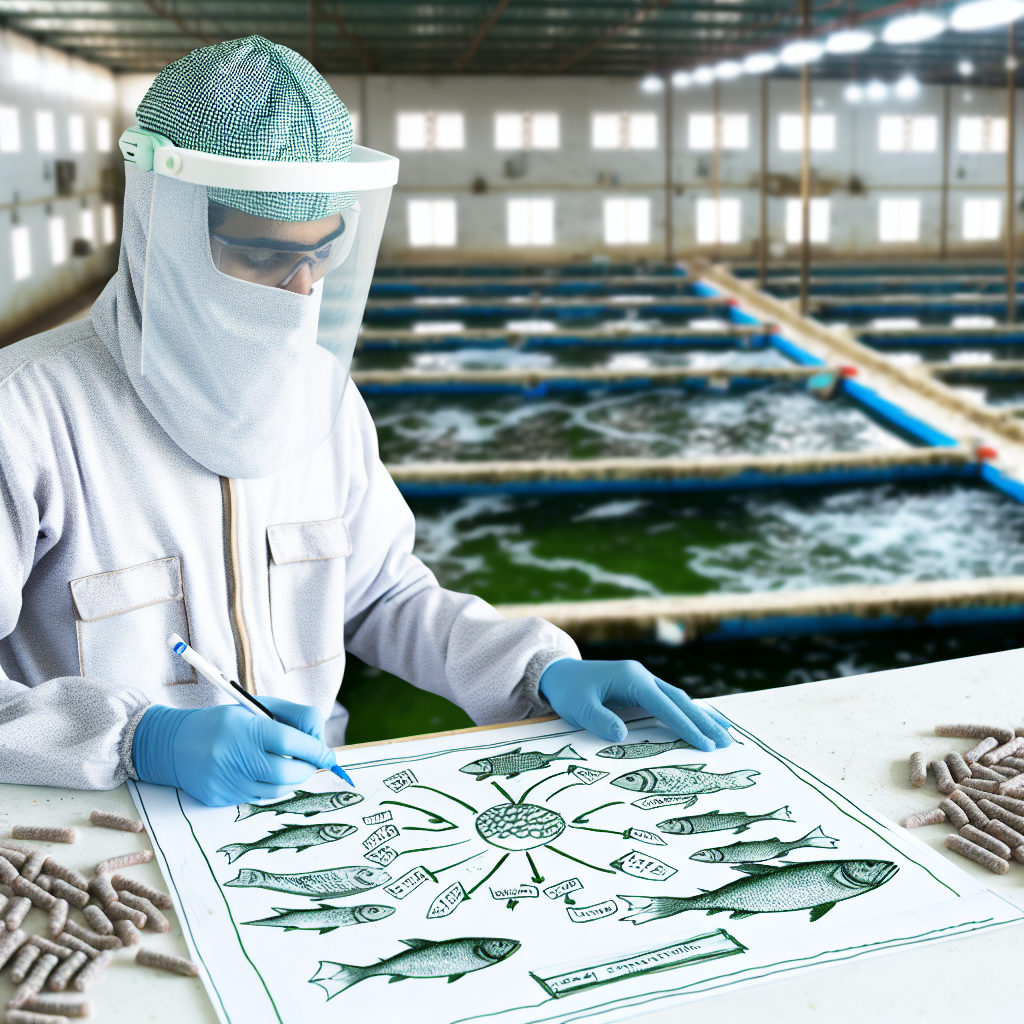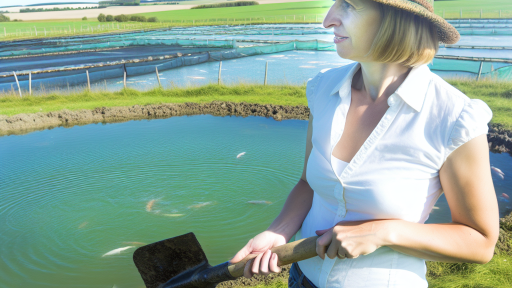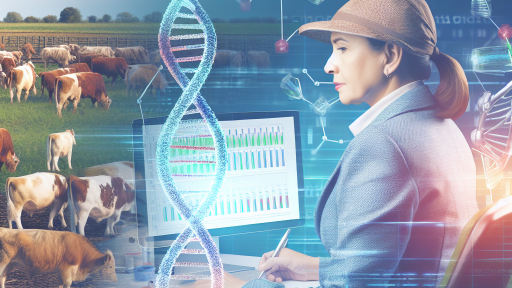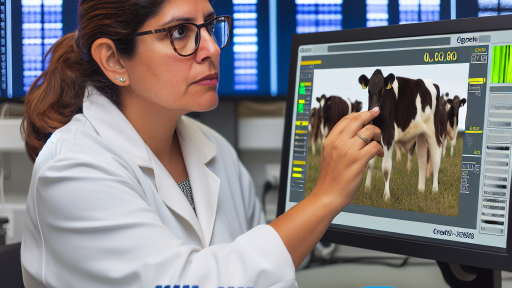Introduction to Feed Management in Aquaculture
Importance of Feed Management
Feed management plays a crucial role in the success of aquaculture operations.
It directly affects the health and growth of aquatic species.
Efficient feed management promotes sustainable practices in fish farming.
It helps minimize waste and optimize resource use.
In addition, proper feed management maximizes the profitability of aquaculture businesses.
Objectives of Feed Management
The primary objective of feed management is to ensure the nutritional needs of aquatic species are met.
This includes providing the right balance of proteins, carbohydrates, and fats.
Another objective is to monitor feed intake and adjust feed rations as necessary.
Additionally, feed management aims to maintain water quality by minimizing uneaten feed.
Proper feed management supports overall farm sustainability and productivity.
Challenges in Feed Management
Feed management encounters several challenges in aquaculture.
One major issue is the variability in feed quality and composition.
Another challenge is the need for continuous monitoring of fish feeding behavior.
Furthermore, the industry faces pressures to reduce feed costs while ensuring quality.
Addressing these challenges is critical for effective feed management.
Transform Your Agribusiness
Unlock your farm's potential with expert advice tailored to your needs. Get actionable steps that drive real results.
Get StartedStrategies for Effective Feed Management
Adopting technology is one effective strategy for managing feed in aquaculture.
Smart feeding systems can help track and adjust feed delivery in real-time.
Regular training for farm staff also enhances feed management practices.
Collaboration with nutritionists ensures feed formulations meet species-specific needs.
Lastly, implementing a robust monitoring system aids in achieving optimal feed utilization.
Understanding Nutritional Requirements of Common Aquaculture Species
Overview of Nutritional Needs
Nutritional requirements vary significantly among aquaculture species.
These differences arise from biological and environmental factors.
Understanding these needs helps in formulating effective feeds.
Essential nutrients include proteins, carbohydrates, fats, vitamins, and minerals.
Adequate nutrition improves growth rates and health of aquatic species.
Key Nutrients for Aquaculture Species
Proteins are crucial for growth and tissue building.
Fish often require higher protein levels compared to crustaceans.
Carbohydrates serve as an energy source but are less vital than proteins.
Fats provide essential fatty acids beneficial for health and development.
Vitamins and minerals play significant roles in metabolic processes.
Each species has its unique nutritional profile that must be met.
Common Aquaculture Species and Their Nutritional Needs
Tilapia requires a balanced diet rich in protein and vitamins.
Salmon thrives on diets high in omega-3 fatty acids.
Trout benefits from a mix of protein, fats, and carbohydrates.
Shrimp and prawns need specific amino acids for optimal growth.
Understanding individual species helps customize feed formulations.
Choosing the Right Feed Type
Feed types vary, including pellets, powders, and flakes.
Consideration of species-specific diets is essential during selection.
Quality feeds provide essential nutrients in digestible forms.
Showcase Your Farming Business
Publish your professional farming services profile on our blog for a one-time fee of $200 and reach a dedicated audience of farmers and agribusiness owners.
Publish Your ProfileHigh-quality feed enhances feed conversion efficiency.
Regular assessments ensure that nutritional needs are met over time.
Feeding Strategies for Optimal Growth
Establish feeding schedules based on species and growth rates.
Monitor feeding behavior to adjust quantities accordingly.
Avoid overfeeding, as it leads to waste and water quality issues.
Implementing a balanced feed regimen encourages consistent growth.
Use nutritional analysis to evaluate feed effectiveness regularly.
Types of Feed: Natural vs. Processed Feed in Aquaculture
Understanding Natural Feed
Natural feed consists of organisms found in the aquatic environment.
This type of feed is highly nutritious and often favored by fish.
Natural feed sources include algae, zooplankton, and benthic invertebrates.
These organisms provide essential vitamins and minerals.
Additionally, natural feed promotes the fish’s natural feeding behavior.
It leads to healthier and more vigorous growth.
Exploring Processed Feed
Processed feed includes commercially manufactured pellets and flakes.
This feed is designed to meet specific nutritional requirements.
It can contain a mix of protein sources, vitamins, and minerals.
Processed feed offers the advantage of convenience for fish farmers.
It simplifies feeding procedures and reduces waste.
Furthermore, processed feed allows farmers to control growth rates.
Comparing Nutritional Value
Natural and processed feeds have distinct nutritional profiles.
Natural feed typically offers higher levels of omega-3 fatty acids.
These fatty acids are crucial for heart and brain health in fish.
On the other hand, processed feed can be formulated for optimal growth.
Farmers can adjust protein levels based on specific fish species.
Both feed types can be used effectively depending on the goals.
Cost Considerations
Cost plays a vital role in feed selection for aquaculture.
Natural feed can be less expensive in certain environments.
However, it may not always be available in sufficient quantities.
Processed feed, while potentially more costly, ensures consistency.
Moreover, it can reduce overall production time and costs.
Farmers must evaluate their budget and resource availability.
Environmental Impact
The choice of feed affects the environment significantly.
Natural feed minimizes reliance on artificial ingredients.
It supports the local ecosystem when sourced sustainably.
In contrast, processed feed requires energy for manufacturing.
This can lead to greenhouse gas emissions and pollution.
Choosing the right feed can contribute to environmental sustainability.
You Might Also Like: Benefits of Artificial Insemination in Livestock
Feed Formulation Strategies: Balancing Cost and Nutrition
Introduction to Feed Formulation
Effective feed formulation is essential in aquaculture.
It directly impacts fish growth and health.
Showcase Your Farming Business
Publish your professional farming services profile on our blog for a one-time fee of $200 and reach a dedicated audience of farmers and agribusiness owners.
Publish Your ProfileMoreover, it influences production costs.
Understanding Nutritional Requirements
Each species has unique nutritional needs.
These needs vary based on age and growth stage.
Additionally, environmental factors play a role.
Key Nutritional Elements
Proteins are vital for growth and development.
Carbohydrates provide energy for daily activities.
Fats enhance energy density and support metabolism.
Vitamins and minerals are critical for overall health.
Understanding these elements aids in creating balanced diets.
Cost Analysis in Feed Formulation
Cost efficiency is crucial in aquaculture feed formulation.
Producers need to consider raw material prices.
They must also evaluate the availability of ingredients.
Formulating cost-effective feeds optimizes profit margins.
Strategies for Balancing Cost and Nutrition
- Utilize alternative protein sources effectively.
- Implement ingredient substitution when possible.
- Optimize the feed conversion ratio.
- Engage in bulk purchasing to reduce costs.
The Importance of Quality Control
Regular assessments ensure feed quality and composition.
Quality control measures prevent nutritional deficiencies.
Testing ingredients before use maintains diet consistency.
Innovative Feeding Techniques
Employing technology enhances feeding strategies.
Automated feeding systems improve feed distribution.
Monitoring fish behavior helps optimize feed delivery.
Effective Feed Management Practices
Aquaculture feed management requires ongoing evaluation.
Continuous adjustments based on fish performance lead to success.
Ultimately, balancing cost and nutrition drives profitability.
Delve into the Subject: Sustainable Livestock Farming: Balancing Animal Welfare and Profit
Assessing Feed Quality
Importance of Feed Quality
Feed quality directly impacts aquaculture production.
High-quality feed enhances growth rates and overall health.
Moreover, it reduces feed conversion ratios, maximizing efficiency.
Key Quality Standards
Feed quality standards ensure safety and nutritional value.
They include essential nutrients, amino acids, and vitamins.
Other factors include acceptable levels of contaminants.
Regulatory bodies set these standards for compliance.
Testing Methods for Feed Quality
Several testing methods evaluate feed quality effectively.
Proximate analysis measures the basic nutritional components.
This method provides insights into moisture, protein, and fat content.
Another crucial method is the bioassay test.
Bioassays assess the practical effectiveness of the feed.
Laboratory Testing Protocols
Laboratories implement strict protocols for feed testing.
Sample collection must occur in a controlled manner.
Proper handling maintains the integrity of the samples.
Training staff in accurate testing practices is essential.
Quality Assurance and Control
Quality assurance ensures adherence to established standards.
Showcase Your Farming Business
Publish your professional farming services profile on our blog for a one-time fee of $200 and reach a dedicated audience of farmers and agribusiness owners.
Publish Your ProfileControl measures include regular audits and inspections.
Additionally, manufacturers should implement traceability systems.
This allows tracking ingredients from origin to end product.
Therefore, these measures enhance consumer trust and safety.
Explore Further: Advanced Breeding Technologies for Modern Farmers

Feeding Techniques: Timing, Frequency, and Methods for Different Species
Understanding Feeding Behavior
Aquaculture species exhibit diverse feeding behaviors.
Recognizing these behaviors is crucial for effective feed management.
Different species have unique feeding patterns and preferences.
For instance, carnivorous fish require different feeds than herbivorous species.
Moreover, feeding strategies should match the species’ natural habits.
Optimal Feeding Timing
Feeding time greatly influences growth rates and overall health.
Typically, feeding should occur during natural activity periods.
Morning and evening are ideal for many fish species.
Conversely, some species may feed better at different times.
It is essential to observe the specific species’ activity patterns.
Determining Feeding Frequency
Feeding frequency affects nutrient absorption and growth efficiency.
Most species benefit from multiple small feedings each day.
In contrast, some species thrive on fewer meals.
For example, tilapia can be fed two to three times daily.
Meanwhile, larger predatory fish may require only one feeding per day.
Methods of Feeding
Feeding methods vary significantly among aquaculture species.
Manual feeding is common in smaller operations.
This approach allows for close monitoring of feed intake.
Automated feeding systems enhance efficiency in larger facilities.
Such systems minimize labor and ensure consistency in feeding.
Special Considerations for Different Species
Carnivorous species like salmon and trout require high-protein diets.
These diets support muscle development and energy levels.
Herbivorous species, such as carp, benefit from plant-based feeds.
Moreover, omnivorous species can adapt to a variety of diets.
Tailoring the feed composition according to species is essential.
Monitoring Feed Efficiency
It’s vital to track feed conversion ratios regularly.
This measurement indicates how effectively fish convert feed into body mass.
Adjustments should be made based on feed efficiency results.
Additionally, monitoring fish health provides valuable feedback.
Healthy fish typically demonstrate improved feeding responses.
Implementing Sustainable Practices
Sustainable feeding practices are critical for long-term success.
Utilizing high-quality feed reduces waste and environmental impacts.
Furthermore, employing alternative protein sources can enhance sustainability.
Examples include insects and plant-based materials.
Ultimately, sustainability benefits both the operation and the ecosystem.
Showcase Your Farming Business
Publish your professional farming services profile on our blog for a one-time fee of $200 and reach a dedicated audience of farmers and agribusiness owners.
Publish Your ProfileDiscover More: Key Genetic Traits to Consider in Breeding
Monitoring Fish Health and Performance
Importance of Regular Assessment
Regular assessment of fish health is crucial for aquaculture success.
It helps identify potential issues early on.
This approach allows for timely interventions to improve outcomes.
Indicators of Fish Health
Several indicators reflect fish health and performance.
- Look for signs of stress, such as unusual swimming patterns.
- Monitor feeding behavior for consistency and eagerness.
- Check for physical abnormalities, including lesions and discoloration.
- Evaluate overall growth rates regularly to ensure optimal development.
Environmental Factors
Environmental conditions significantly influence fish health.
Maintain appropriate water quality for optimal growth and welfare.
Regularly test parameters like pH, temperature, and dissolved oxygen levels.
These factors directly impact feeding efficiency and fish performance.
Feed Management Strategies
Effective feed management enhances fish health and growth.
Use high-quality feed tailored to the specific species in culture.
Implement feeding schedules to optimize nutrient uptake.
Observe fish during feeding to ensure adequate intake and adjust as needed.
Monitoring and Adjustments
Regularly monitor fish response to different feeding strategies.
Adjust feed types and quantities based on observations and growth data.
This flexibility allows aquaculture operations to thrive under varying conditions.
Data Collection and Analysis
Collect data on fish health and performance systematically.
Utilizing technology can aid in effective data analysis.
This information helps refine feed management practices over time.
Continuous improvement leads to better health outcomes and productivity.
Innovations in Aquaculture Feed
Introduction to Sustainable Practices
Aquaculture is evolving rapidly to embrace sustainability.
Innovative practices improve feed efficiency and reduce environmental impact.
These methods ensure healthier fish and better resource utilization.
Utilizing Alternative Ingredients
Alternative feed ingredients are gaining popularity in aquaculture.
Fish meal and fish oil are often replaced with plant-based sources.
Ingredients like soy, peas, and algae contribute to sustainability.
Additionally, insect-based proteins present promising opportunities.
Benefits of Alternative Ingredients
Using alternative ingredients reduces dependence on marine sources.
This shift enhances the ecological footprint of aquaculture.
Furthermore, it diversifies the nutritional profile of fish feeds.
Fish raised on varied diets often display improved health outcomes.
Innovative Feed Formulation Technologies
Technological advancements enhance feed formulation efficiency.
Software tools allow for precise nutrient formulation.
These technologies optimize growth rates and feed conversion ratios.
Moreover, they minimize waste and environmental impact.
Precision Feeding Techniques
Precision feeding techniques ensure fish receive optimal nutrition.
Sensors monitor fish behavior and adjust feed accordingly.
This approach reduces overfeeding and waste, improving sustainability.
Collaboration for Sustainable Solutions
Collaboration among stakeholders drives innovation in feed management.
Research institutions, companies, and farmers share knowledge and resources.
Showcase Your Farming Business
Publish your professional farming services profile on our blog for a one-time fee of $200 and reach a dedicated audience of farmers and agribusiness owners.
Publish Your ProfileJoint efforts lead to the development of cutting-edge feed solutions.
This synergy fosters sustainable practices across the aquaculture industry.




